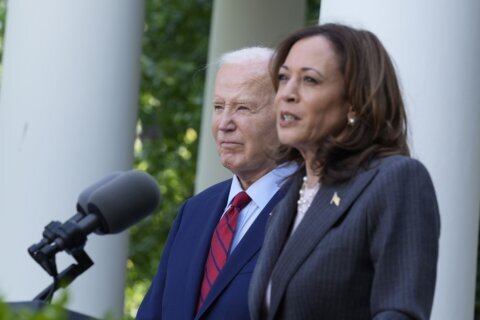Undocumented youth often face roadblocks when it comes to paying for college due to their ineligibility for federal financial aid, such as Pell Grants or student loans. This group includes students who were brought to the U.S. as children and are often referred to as “Dreamers” due to proposed federal legislation called the DREAM Act that would give eligible youth a path to citizenship.
“Undocumented students, for the most part, do not know that they’re undocumented,” says Maria Gabriela “Gaby” Pacheco, director of advocacy, development and communications at TheDream.US, a national college access and success program for Dreamers.
Undocumented students represent about 2% of the higher education population in the U.S., according to a 2020 analysis by the Presidents’ Alliance on Higher Education and Immigration, an organization of college and university leaders, and New American Economy, a bipartisan research organization that advocates for economy-friendly immigration policies.
Like all applicants for federal student financial aid, undocumented students are asked to provide a Social Security number.
“That’s when their parents say, ‘We have to tell you something, you don’t have status,'” Pacheco says. “Their worlds kind of start crashing down. It’s really hard for them because you don’t know what you don’t know. And so you don’t really know to be able to apply.”
Though federal aid is not available, there are still options to help undocumented students pay for college, including scholarships and state aid in some cases.
[Read: The Cost of Private vs. Public Colleges.]
But funding opportunities vary depending on state residence and immigration status, such as whether a student is a Deferred Action for Childhood Arrivals recipient. This policy, known as DACA, protects from deportation and gives temporary work permits to undocumented immigrants who were brought to the U.S. before the age of 16.
President Barack Obama created DACA by executive order in 2012 as a temporary measure after Congress voted down the DREAM Act. President Donald Trump rescinded the program in 2017, calling it unlawful. Federal appeals courts ultimately agreed and stopped new applications, but allowed renewals to continue for existing DACA recipients.
“It is important we understand this population of students so that students feel safe to attend” college, Amanda Cornelius, associate vice president of enrollment management at Northern Arizona University, wrote in an email. “It is often quite daunting for students to self-identify as undocumented, with or without additional financial barriers. Most institutions have a point of contact for DACA/undocumented students.”
Search for Scholarships
Many colleges don’t require a student to be a citizen or permanent resident to qualify for institutional scholarships and grants, experts say. But undocumented students need to do their research, as state and college policies vary.
George Washington University in Washington, D.C., for instance, offers qualified applicants — regardless of their immigration or citizenship status — merit scholarships ranging from $5,000 to $30,000 per academic year. Undocumented students at GWU may also be eligible for need-based aid. Students are required to fill out the CSS Profile, which several hundred schools and organizations use to ask for more in-depth student financial information than the Free Application for Federal Student Aid, or FAFSA.
Another option is private scholarships. Nonprofit organizations like TheDream.US and Golden Door Scholars cater specifically to undocumented students.
[Read: How to Pay for College Using These Overlooked Strategies.]
TheDream.US has two scholarships. One of them, the renewable National Scholarship, provides undocumented students up to $16,500 for an associate degree and $33,000 for a bachelor’s degree. Applicants must have arrived in the U.S. before the age of 16 and before Nov. 1, 2017, have “significant unmet financial need” and be eligible for in-state tuition at one of TheDream.US’ partner institutions, among other requirements.
“Our scholarship helps students be able to afford college with a combination of our scholarship, plus in-state tuition, plus state aid,” Pacheco says. “And if there is any other remaining balance, the institutions usually either do a tuition reduction or provide private dollars to close the gap.”
The organization’s Opportunity Scholarship offers undocumented students living in areas without access to in-state tuition up to $80,000 to cover tuition, fees and on-campus housing and meals.
Meanwhile, the Golden Door Scholarship provides eligible undocumented students or students with DACA status funding for a four-year degree at a partner school.
Beyond national scholarships, undocumented students should also research local scholarships, including those offered by places of worship or civic organizations. Experts advise students to start the search process early and continue applying for scholarships each year they are enrolled in college.
“Some scholarships have citizenship requirements, but many others do not,” Boyd Bradshaw, vice president for enrollment management at Towson University in Maryland, wrote in an email. “As a best practice, students should begin searching for scholarships as early as a year prior to the start of the next academic year. A good place for a student to start is on the website or financial aid office of the university they plan to attend.”
Apply for State Financial Aid
Seventeen states — including California, Maryland, New York, Virginia, Texas and Washington — and the District of Columbia allow eligible undocumented students to access state financial aid, according to the Higher Ed Immigration Portal. These jurisdictions may require undocumented students to complete a financial aid application.
Virginia, for instance, opened the Virginia Alternative State Aid application in 2022 to determine eligibility for state need-based financial assistance among students who are ineligible to complete the FAFSA. This includes undocumented students or those with DACA status living in Virginia.
[Read: An Ultimate Guide to Understanding College Financial Aid.]
In Maryland, undocumented students who meet eligibility requirements can apply for state awards like the Maryland Community College Promise Scholarship, a last-dollar scholarship program; the Guaranteed Access Grant, which awards students up to $20,000 annually; and other state scholarships.
Take Advantage of In-State Tuition
Washington, D.C. and 23 states have policies that provide access to in-state tuition and some state aid or scholarships for DACA recipients and undocumented students, according to the Higher Ed Immigration Portal. Five states — Missouri, New Hampshire, North Carolina, Tennessee and Wisconsin — bar access to in-state tuition or state financial aid for undocumented students, including DACA recipients. The remaining states have varying degrees of support or no stated policy for undocumented students.
To qualify for in-state tuition in certain states, undocumented students typically need to be enrolled in a school in the state for a certain number of years, and graduate from high school or obtain a GED in the state. Undocumented students with questions about the financial aid process can contact their high school counselor or a college’s financial aid office, experts say.
“Call the financial aid office and just let them know, ‘I’m thinking about applying to your school. I’m not a U.S. citizen. I know I won’t qualify for federal aid and I want someone to tell me what I might be eligible for and help me through the process,'” says Jill Desjean, senior policy analyst at the National Association of Student Financial Aid Administrators. “Financial aid offices are happy to help any student who comes through their door.”
Trying to fund your education? Get tips and more in the U.S. NewsPaying for College center.
More from U.S. News
10 Common Mistakes Made on the FAFSA
FAFSA Deadlines You Should Know
How Undocumented Students Can Get College Financial Aid originally appeared on usnews.com







